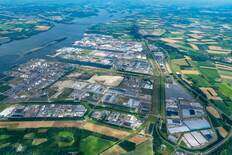- The blending obligation requires energy suppliers to add green gas to the grid starting January 1, 2027.
- Perpetual Next received a €30 million subsidy in January 2025 to convert its Moerdijk biogas plant for green gas production.
- The EemsGas project in Delfzijl will produce 16 million m³ of green gas annually from torrefied woody residual streams.
- The goal is to produce 2 billion m³ of green gas by 2030, as outlined in the Climate Agreement.

Blending Obligation Introduction
On April 25, 2025, the cabinet announced a blending obligation requiring energy suppliers to incorporate a specific percentage of green gas into the gas grid starting January 1, 2027. This initiative aims to boost green gas production and aligns with national climate goals.
Platform Green Gas Collaboration
Perpetual Next, in partnership with Gasunie and Groningen Seaports, is part of Platform Green Gas, a knowledge center for stakeholders. The platform's goal is to produce two billion m³ of green gas by 2030, as per the Climate Agreement.
Moerdijk Project
In January 2025, Perpetual Next secured a €30 million subsidy to convert its Moerdijk biogas plant for green gas production. This conversion will enable the production of approximately 6 million m³ of green gas annually, alongside liquid CO₂ for local use in greenhouse horticulture.
EemsGas Project in Delfzijl
Perpetual Next and Gasunie are developing the EemsGas project in Delfzijl, featuring an advanced gasification plant to produce 16 million m³ of green gas per year from torrefied woody residual streams. The joint venture involves a 50-50 collaboration for development and construction, with Perpetual Next managing operations and Gasunie handling distribution via the national gas grid.

